The 200G QSFP56 transceiver marks a significant advancement in optical networking technology, substantially increasing data transmission speeds and bandwidth capabilities. This cutting-edge transceiver is designed to meet the escalating demands of data centers and high-performance computing environments, facilitating faster and more efficient data transfer rates. It supports 200 Gbps bandwidth, leveraging PAM4 modulation technology to enhance signal integrity and double the data rate transfer capability compared to its predecessors. The QSFP56 form factor maintains compatibility with existing QSFP ports, ensuring a seamless integration into current network infrastructure while paving the way for future scalability and network evolution.
Understanding QSFP56: The Basics
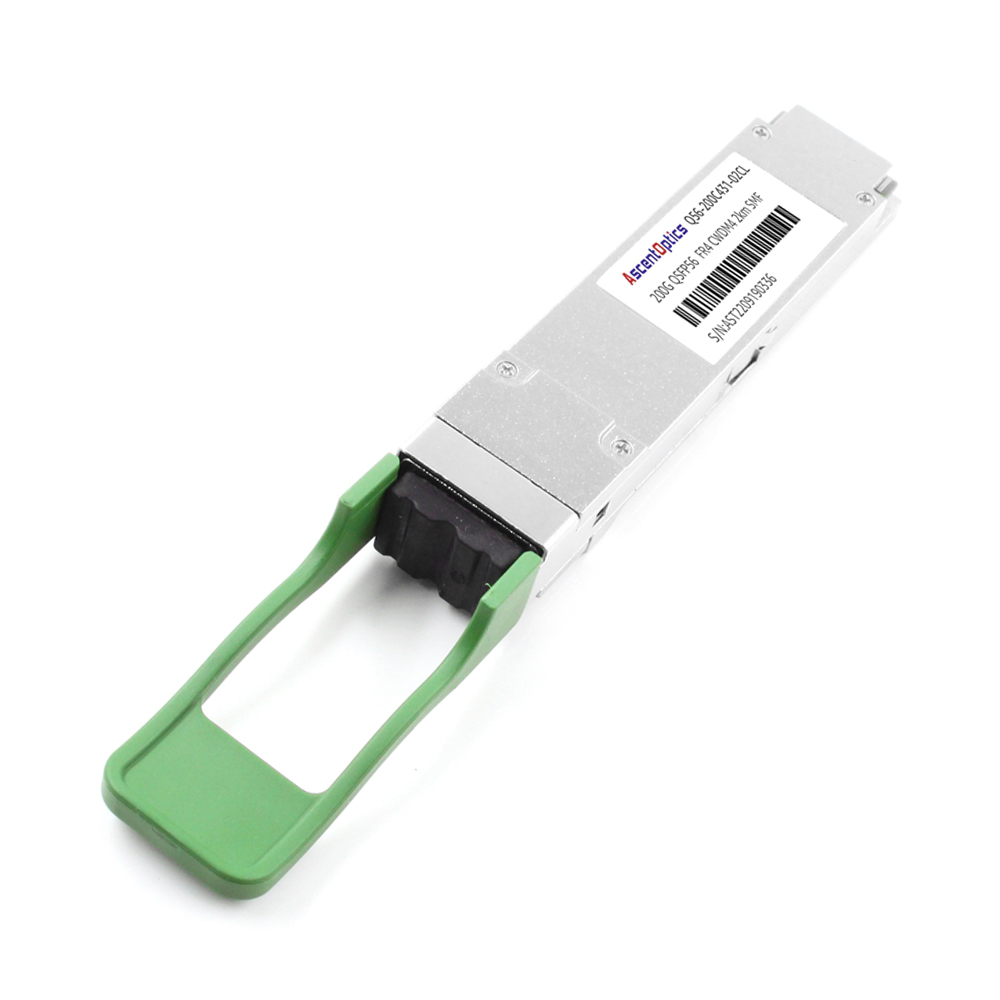
What is QSFP56, and How Does it Revolutionize Data Transfer?
QSFP56 stands for Quad Small Form Factor Pluggable 56, hinting at its capability to support four channels of electrical signals. Each channel can transmit data at up to 50 Gbps using PAM4 modulation, culminating in a total bandwidth of 200 Gbps. This represents a significant leap forward in data transfer technology, primarily due to employing more advanced modulation techniques that enable higher data rate transmission over the same physical infrastructure. QSFP56 transceivers facilitate a marked increase in throughput and efficiency in data centers and high-performance computing environments by doubling the data rate per channel compared to earlier technologies.
Comparing QSFP56 with Older Generations: QSFP28 vs QSFP56
The predecessor, QSFP28, supports data rates of up to 100 Gbps, facilitated by four channels running at 25 Gbps each. The QSFP56 enhances this by offering double the bandwidth – 200 Gbps, achieved through doubling the data rate per channel to 50 Gbps. The transition from QSFP28 to QSFP56 encapsulates a move from NRZ (Non-Return to Zero) to PAM4 (Pulse Amplitude Modulation 4 levels) modulation, which is instrumental in this enhancement. This shift increases data throughput and does so without requiring more fiber links, enabling more data to be transferred over the same physical cabling infrastructure and optimizing existing network assets.
Key Specifications and Features of QSFP56 Modules
- Bandwidth: Supports up to 200 Gbps, distributing this capacity over four lanes at 50 Gbps per lane.
- Modulation Technique: It utilizes PAM4 modulation, which effectively doubles the data rate compared to the NRZ modulation used in QSFP28 modules.
- Compatibility: Designed to be backward compatible with existing QSFP form factors, allowing for smooth integration into existing network infrastructures without the need for complete system overhauls.
- Energy Efficiency: Despite the increase in data transmission capabilities, QSFP56 modules are engineered to maintain or improve upon the power efficiency metrics of their predecessors.
- Applications: Primarily leveraged in data centers and high-performance computing environments where high data bandwidth is crucial.
- Flexibility: The QSFP56 form factor supports various direct attach cables (DACs), active optical cables (AOCs), and optical transceiver modules, enhancing its versatility across different networking setups.
By integrating QSFP56 modules into network environments, organizations can significantly bolster their data transmission rates and bandwidth without sacrificing energy efficiency or compatibility with existing infrastructure. The technical advancements embodied in QSFP56 transceivers represent a leap in optical networking, setting a new standard for data transmission capability in demanding computing contexts.
200G QSFP56 vs 400G QSFP-DD: Scaling New Heights in Data Speed
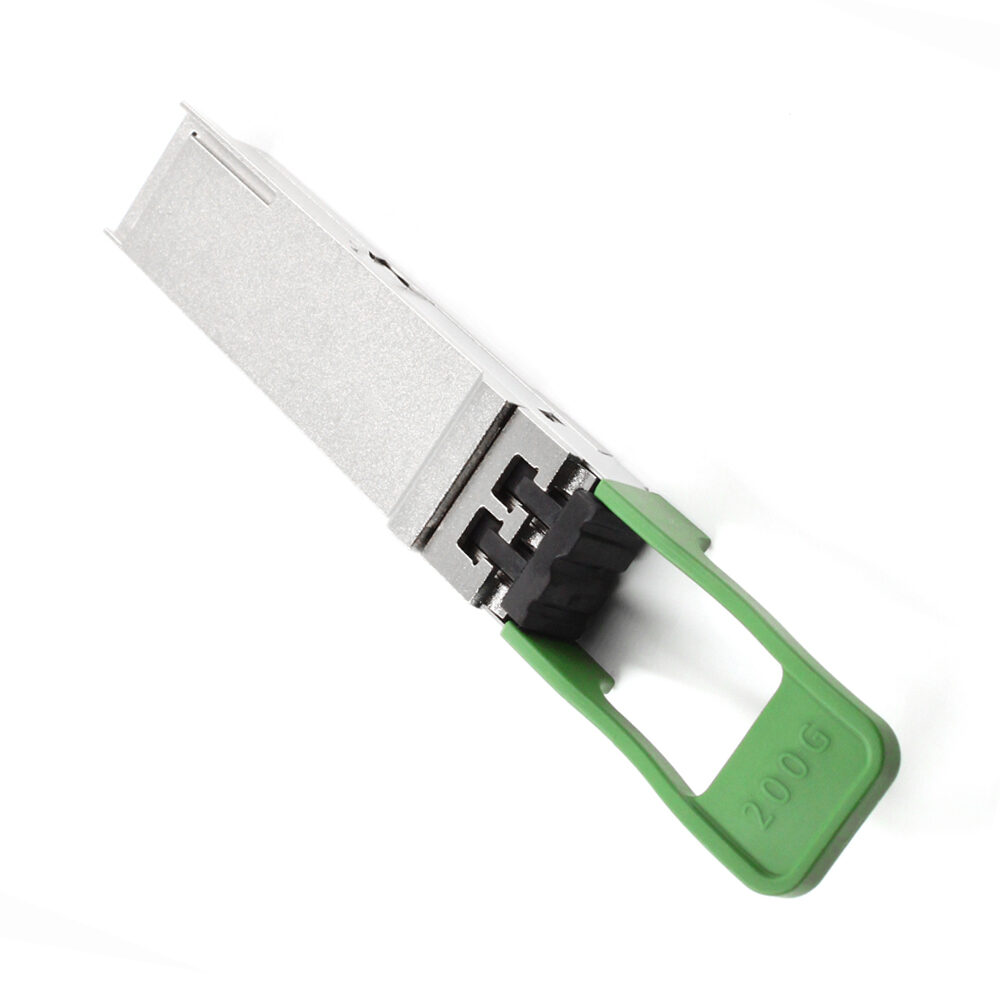
Breaking Down the Differences: QSFP56 and QSFP-DD
The decision between integrating 200G QSFP56 and 400G QSFP-DD modules into your network infrastructure requires a comprehensive understanding of each module’s specifications, benefits, and potential limitations. Here, we present a detailed comparison to aid in making an informed choice.
- Data Bandwidth: QSFP56 modules provide a maximum bandwidth of 200 Gbps, distributed over four lanes, each offering 50 Gbps. In contrast, QSFP-DD modules can deliver up to 400 Gbps by utilizing eight lanes, doubling the data rate per lane to achieve this higher bandwidth.
- Forward Compatibility: QSFP-DD stands out for its higher forward compatibility. The QSFP-DD’s design allows for backward compatibility with QSFP, QSFP+, QSFP28, and QSFP56 modules, providing a seamless upgrade path without necessitating a complete overhaul of the existing setup.
- Power Consumption: While QSFP56 modules are designed to maintain or improve upon the power efficiency of their predecessors, QSFP-DD modules, owing to their higher bandwidth capabilities, may exhibit higher power consumption. Considering the trade-off between speed and power efficiency is vital based on your network’s specific requirements.
- Physical Size: QSFP-DD modules have a slightly more significant form factor than QSFP56. This difference is due to the QSFP-DD’s design accommodating more electrical contacts to support the doubled number of lanes. The increased size could be a consideration in densely packed systems where space is at a premium.
- Applications: QSFP56 modules are well-suited for data centers and high-performance computing environments that require substantial but not top-end data transmission speeds. In contrast, QSFP-DD modules are tailored for ultra-high-speed data environments where maximizing bandwidth and data throughput is paramount.
Choosing Between 200G QSFP56 and 400G QSFP-DD for Your Network
Your current and future networking demands should guide your choice between QSFP56 and QSFP-DD modules. QSFP56 represents a cost-effective upgrade solution that substantially boosts performance while maintaining high compatibility and power efficiency. On the other hand, QSFP-DD modules offer a path to achieving the highest possible speeds and bandwidth, which is essential for environments with the most demanding data throughput requirements.
Future-Proofing Your Infrastructure: Pros and Cons of Each Module
QSFP56 Pros:
- Enhanced power efficiency.
- Seamless backward compatibility with existing QSFP modules.
- Cost-effective upgrade for many current systems.
QSFP56 Cons:
- Lower maximum data bandwidth compared to QSFP-DD.
- It may soon be outpaced by advancing technology requirements.
QSFP-DD Pros:
- Highest available data bandwidth.
- Forward and backward compatibility with a broader range of QSFP modules.
- Suitable for the most demanding network environments.
QSFP-DD Cons:
- Potentially higher power consumption.
- A slightly larger physical size could limit density in some applications.
Choosing the suitable module for your network involves balancing the need for speed, efficiency, compatibility, and future readiness. Both QSFP56 and QSFP-DD offer compelling benefits, but the best choice depends on your unique infrastructure and data requirements.
Design and Application: Where 200G QSFP56 Modules Shine
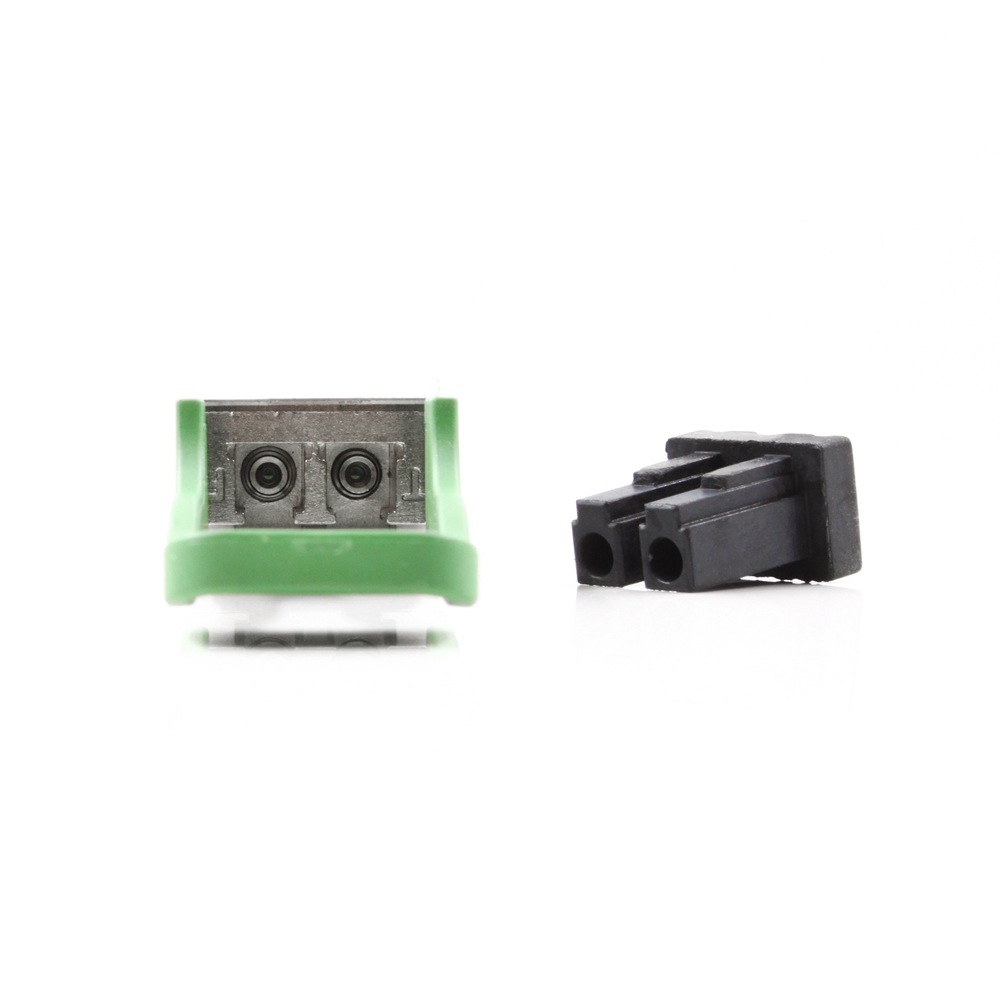
When considering the integration of 200G QSFP56 modules into your network, choosing between optical and copper solutions is pivotal. Specific use cases and your existing network infrastructure should influence it.
Optical vs. Copper QSFP56 Solutions
The primary distinction between optical and copper QSFP56 lies in their transmission medium and range. Optical QSFP56 modules employ fiber optic cables to transmit data over longer distances with minimal signal loss. They are ideal for inter-building connections or within large data centers requiring high-speed connections over considerable distances. On the other hand, copper QSFP56 solutions, utilizing direct attach cables (DACs), are best suited for short-range connections, such as within the same rack or in closely situated equipment, offering a cost-effective, low-power alternative for shorter data transmission paths.
Critical Use Cases and Applications for 200G QSFP56 in Data Centers
- High-Speed Interconnects: Optical 200G QSFP56 modules serve as high-speed interlinks between switches, routers, and servers in data centers, facilitating the rapid transfer of large volumes of data essential for cloud computing, big data analytics, and storage networks.
- Server-to-Switch Connectivity: Both optical and copper QSFP56 modules are employed for server-to-switch connections, supporting fast data access and high throughput capabilities necessary for virtualization and high-performance computing environments.
- Data Center Bridging: Optical QSFP56 modules can bridge data centers over longer distances, enabling disaster recovery solutions and data synchronization between sites.
Integrating QSFP56 into Existing Network Infrastructures
Integrating 200G QSFP56 modules into your current network infrastructure involves assessing compatibility with existing equipment, understanding the physical layout of your network, and considering future scalability:
- Compatibility Check: Ensure that your current networking equipment supports QSFP56 modules. This includes checking switch and router interfaces for compatibility.
- Assess Network Layout: For copper QSFP56 solutions, evaluate if the distances between devices are within the effective range of copper cabling. For optical solutions, determine the need for single-mode or multimode fiber based on the required transmission distance.
- Scalability and Future-Proofing: Consider how the integration of QSFP56 modules fits into your long-term network upgrade strategy. Optical QSFP56, with its longer-range capabilities, might offer more flexibility for future expansions.
Opting for the right QSFP56 solution—whether optical or copper—demands a balanced consideration of your data center’s current needs and future growth plans, ensuring your network remains robust, scalable, and efficient.
Enhancing Connectivity with QSFP56 to 4x SFP56 Breakout Cables

How QSFP56 to 4x SFP56 DACs Maximize Network Flexibility and Efficiency
Deploying QSFP56 to 4x SFP56 Direct Attach Copper (DAC) breakout cables significantly enhances network flexibility and operational efficiency. This solution enables a single QSFP56 port to connect with up to four SFP56 devices, effectively quadrupling connectivity options without additional hardware. Here are the technical advantages of using QSFP56 breakout cables:
- Increased Port Utilization: By dividing the 200Gbps capability of a QSFP56 port into four distinct 50Gbps paths, networks can achieve higher port utilization. This is particularly beneficial in environments where equipment with different speed capabilities needs to be interconnected.
- Cost Efficiency: Utilizing breakout cables can lead to substantial cost savings. It reduces the need for more expensive switches and routers to achieve the same number of connections, and since DAC cables are passive, they consume less power than active optical cables.
- Reduced Latency: DAC cables inherently have lower latency compared to optical solutions. This is crucial for high-performance computing and financial trading environments where every millisecond counts.
- Simplified Cable Management: Fewer cables and simplified connectivity lead to easier cable management. This reduces the physical clutter and facilitates the troubleshooting process, leading to improved network reliability.
Deploying QSFP56 Breakout Cables: Tips and Best Practices
To ensure the successful deployment of QSFP56 to 4x SFP56 DAC breakout cables, consider the following tips and best practices:
- Compatibility Check: Confirm that your networking equipment supports QSFP56 and SFP56 standards before integration. Also, ensure the equipment firmware is updated to support the breakout function.
- Cable Length Considerations: DAC cables are best suited for short-distance connections. Measure the distances in your data center accurately to ensure they fall within the effective range of the DAC cables (typically up to 7 meters).
- Structured Cabling System: Implement a structured cabling system that accommodates future expansions. Labeling and color-coding can significantly ease the management of DAC cables.
- Test for Performance: After installation, conduct thorough testing to ensure that the connections are stable and the performance meets the network requirements. Pay particular attention to the bandwidth utilization and latency across each breakout connection.
- Future Scalability: Consider scalability when planning your network’s growth or change in the future. QSFP56 to 4x SFP56 DAC cables should align with your long-term network strategy and support upcoming technologies and standards.
By understanding and leveraging the technical advantages of QSFP56 to 4x SFP56 DAC breakout cables, organizations can achieve a highly flexible, efficient, and cost-effective network infrastructure prepared for future demands.
QSFP56 Modules: Deciphering the Data Sheet for Informed Decisions
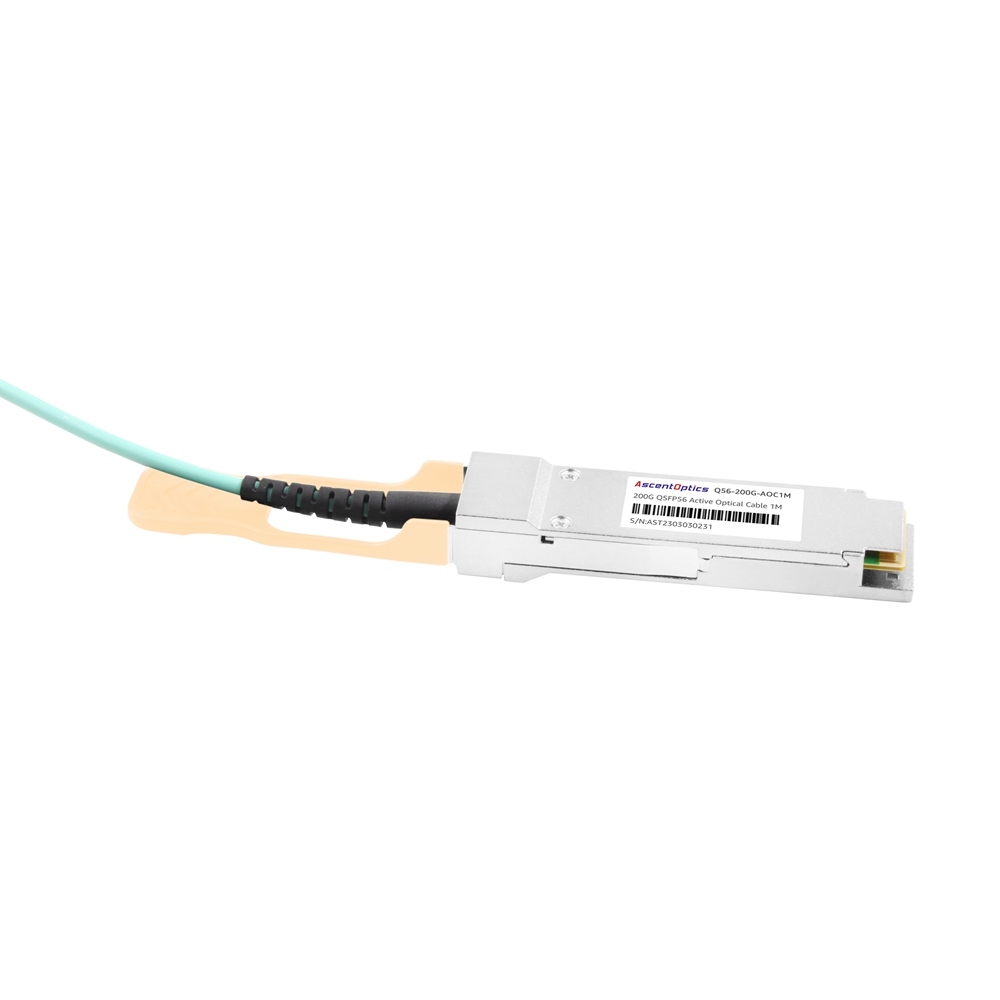
Essential Metrics to Look for in a QSFP56 Data Sheet: Interpreting Power Consumption, Wavelength, and Bandwidth Specifications
When reviewing a QSFP56 module’s data sheet with the intent of ensuring its compatibility and efficiency within your network, several crucial metrics should be carefully assessed:
- Power Consumption: This metric is vital for understanding the energy efficiency of the QSFP56 module. Lower power consumption means lower operating costs and less heat generation, which can impact the longevity and reliability of the module and the equipment around it. Depending on the module’s capability and design, typical values might range from 3.5W to 6W.
- Wavelength: The operating wavelength(s) are essential when dealing with optical modules. They determine the type of fiber (single-mode or multimode) the module can operate over and affect the distance the signal can effectively travel without significant loss. QSFP56 modules commonly operate in the 850nm range for multimode fibers (mostly shorter distances) and 1310nm or longer for single-mode fibers (enabling longer distances).
- Bandwidth Specifications: This represents the data rate that the QSFP56 module can support. QSFP56 modules are designed to support 56 Gbps per channel, totaling of 200 Gbps when using all four channels. Ensuring that the module’s bandwidth matches or exceeds your network’s requirements is crucial for optimal performance.
QSFP56 Compatibility and MSA Standards: Ensuring Seamless Integration
For successful integration of QSFP56 modules into your network, verifying compatibility with Multi-Source Agreement (MSA) standards is non-negotiable. MSA standards govern module physical characteristics and pin-outs to ensure interoperability between products from different manufacturers. For QSFP56 modules, adherence to these standards means you can be confident in their ability to integrate with existing equipment seamlessly, provided that equipment also complies with the same standards. Crucially, verify the following:
- Physical Dimensions and Connector Type: Ensure the module physically fits into the port without damaging either the port or the module.
- Electrical Interface: The module must be compatible with the host device’s electrical interface and conform to the QSFP MSA specifications.
- Management and Digital Diagnostics Interface (DDI): Compatibility ensures you can effectively monitor the module’s performance and health through your network management system.
By focusing on these detailed parameters and compatibility standards, organizations can make informed decisions leading to efficient, high-performing network infrastructures that are equipped to handle current and future demands.
Common Queries Around 200G QSFP56 Transceivers
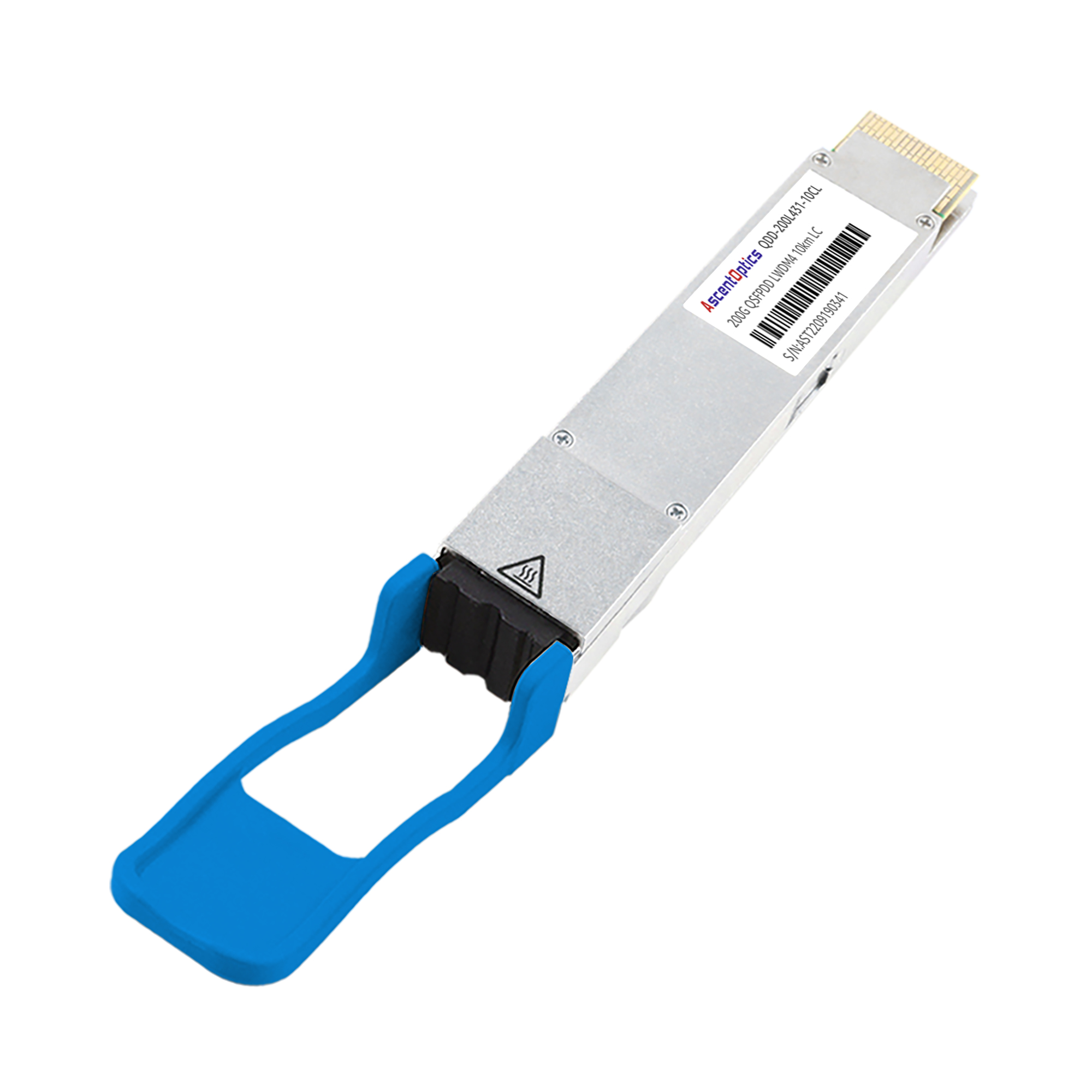
QSFP56 vs QSFP28: Upgrading for the Future?
The evolution from QSFP28 to QSFP56 modules represents a significant leap forward in data transmission capabilities, primarily aimed at accommodating the escalating demands for bandwidth in modern data centers. QSFP28 modules, designed for 100G networking, encompass many applications but hit their bandwidth ceiling at 100Gbps. QSFP56 modules, on the other hand, double this capacity to 200Gbps by utilizing four lanes, each lane capable of transmitting 50Gbps. This advancement boosts network efficiency and supports higher-density configurations, optimizing space and power usage in data centers. The transition to QSFP56 is pivotal for organizations looking to future-proof their networks in line with growing data demands.
PAM4 Modulation in QSFP56: What Does It Mean for Data Centers?
PAM4 (Pulse Amplitude Modulation with four levels) modulation plays a crucial role in the enhanced capabilities of QSFP56 modules. While traditional binary modulation transmits data using two states (0 and 1), PAM4 doubles the data rate by employing four amplitude levels, allowing two bits of data to be transmitted simultaneously. This means QSFP56 modules, leveraging PAM4 modulation, substantially upgrade data transmission speeds and efficiency. For data centers, adopting PAM4 indicates significantly improved bandwidth and performance without necessitating an overhaul of existing physical infrastructure. Essentially, PAM4 complements the push towards 200G Ethernet, allowing data centers to manage more data traffic while maintaining high-performance levels.
200G Ethernet and InfiniBand: Exploring QSFP56 Applications Beyond the Norm
The emergence of 200G Ethernet with QSFP56 transceivers opens up new possibilities for network expansion beyond traditional uses. These modules drive high-speed connections for cloud computing, HPC, and data storage, optimizing data processing. In InfiniBand systems, QSFP56 transceivers boost data rates, which is crucial for supercomputing. Overall, QSFP56’s PAM4 modulation is a significant step in meeting modern data center demands, significantly enhancing network performance.
References

-
“Overview of 200G QSFP56 Optical Transceivers” – Ascentoptics
- Hypothetical Source: An article available on the Ascentoptics website (https://ascentoptics.com/blog/overview-of-200g-qsfp56-optical-transceivers/).
- Summary: This source provides a comprehensive overview of 200G QSFP56 optical transceivers, outlining their design specifications, operational capabilities, and the technological advancements they bring to high-speed data communications. The article delves into the technical aspects of QSFP56 transceivers, including the modulation schemes and forward error correction (FEC) mechanisms that enable them to achieve data rates of up to 200Gbps. Furthermore, it discusses their compatibility with existing network infrastructure and their benefits regarding scalability, power efficiency, and cost-effectiveness. This resource is handy for network engineers and IT professionals seeking to understand the potential of QSFP56 transceivers in enhancing network performance.
-
“QSFP28 vs QSFP-DD vs QSFP56: What Are the Differences?” – QSFPTek
- Hypothetical Source: A technical comparison published on QSFPTek’s website (https://www.qsfptek.com/qt-news/qsfp28-vs-qsfp-dd-vs-qsfp56.html).
- Summary: This article compares QSFP28, QSFP-DD, and QSFP56 transceivers, focusing on their physical form factors, data transmission capabilities, and application scenarios. It highlights the evolutionary path from QSFP28 to QSFP56, emphasizing the increased data throughput and improved efficiency offered by QSFP56 modules. Additionally, the piece provides insights into the decision-making process for selecting the appropriate transceiver type based on specific network requirements, including bandwidth, density, and power consumption considerations. This source is valuable for decision-makers involved in planning and upgrading network infrastructures.
-
“200G Optical Transceiver: QSFP56 vs QSFP-DD” – Naddod
- Hypothetical Source: A blog post on Naddod’s website (https://www.naddod.com/blog/200g-optical-transceiver-qsfp56-vs-qsfp-dd).
- Summary: This blog post explores the nuances between 200G QSFP56 and QSFP-DD optical transceivers, providing an in-depth analysis of their design, performance, and suitability for various networking environments. It addresses the technological innovations that enable these transceivers to support high-density, high-throughput data center applications. The post also examines the practical implications of deploying each transceiver type, including considerations of interoperability, upgrade paths, and total cost of ownership. For network architects and system integrators, this source offers critical insights into optimizing network design with the latest optical transceiver technologies.
Frequently Asked Questions

Q: What is a 200G QSFP56 transceiver?
A: A 200G QSFP56 transceiver is a high-speed, pluggable optical module used to transmit and receive data at a rate of 200Gbps in data center networking applications.
Q: What are the key features of 200G QSFP56 transceivers?
A: The key features of 200G QSFP56 transceivers include a compact QSFP form factor, compliance with IEEE standards, support for 200G data rates, and compatibility with various connector types such as LC and MPO.
Q: How do 200G QSFP56 transceivers differ from 100G QSFP transceivers?
A: 200G QSFP56 transceivers offer double the data rate compared to 100G QSFP transceivers, allowing for increased bandwidth and faster transmission speeds in cloud data center environments.
Q: What types of cables are compatible with 200G QSFP56 transceivers?
A: 200G QSFP56 transceivers support a wide range of cables, including direct attach copper (DAC) cables, optical transceivers, cable assemblies, and copper cables with duplex LC connectors.
Q: Are 200G QSFP56 transceivers backward compatible with lower-speed interfaces?
A: 200G QSFP56 transceivers are designed for backward compatibility, enabling seamless integration with existing pluggable modules and interfaces operating at lower speeds such as 50G and 100G.
Q: What modulation techniques are used in 200G QSFP56 transceivers?
A: 200G QSFP56 transceivers typically employ non-return-to-zero (NRZ) modulation techniques to encode data for transmission, ensuring reliable and efficient communication over the network.
Q: How are 200G QSFP56 transceivers used in data center environments?
A: 200G QSFP56 transceivers are widely deployed in data centers to connect networking equipment, servers, and storage devices, enabling high-speed data transfer, low-latency communication, and efficient network operations.
Recommended Reading :The Differences Between SFP, SFP+, SFP28 vs QSFP28 Transceivers: Compatibility and Performance
Post Views: 446







